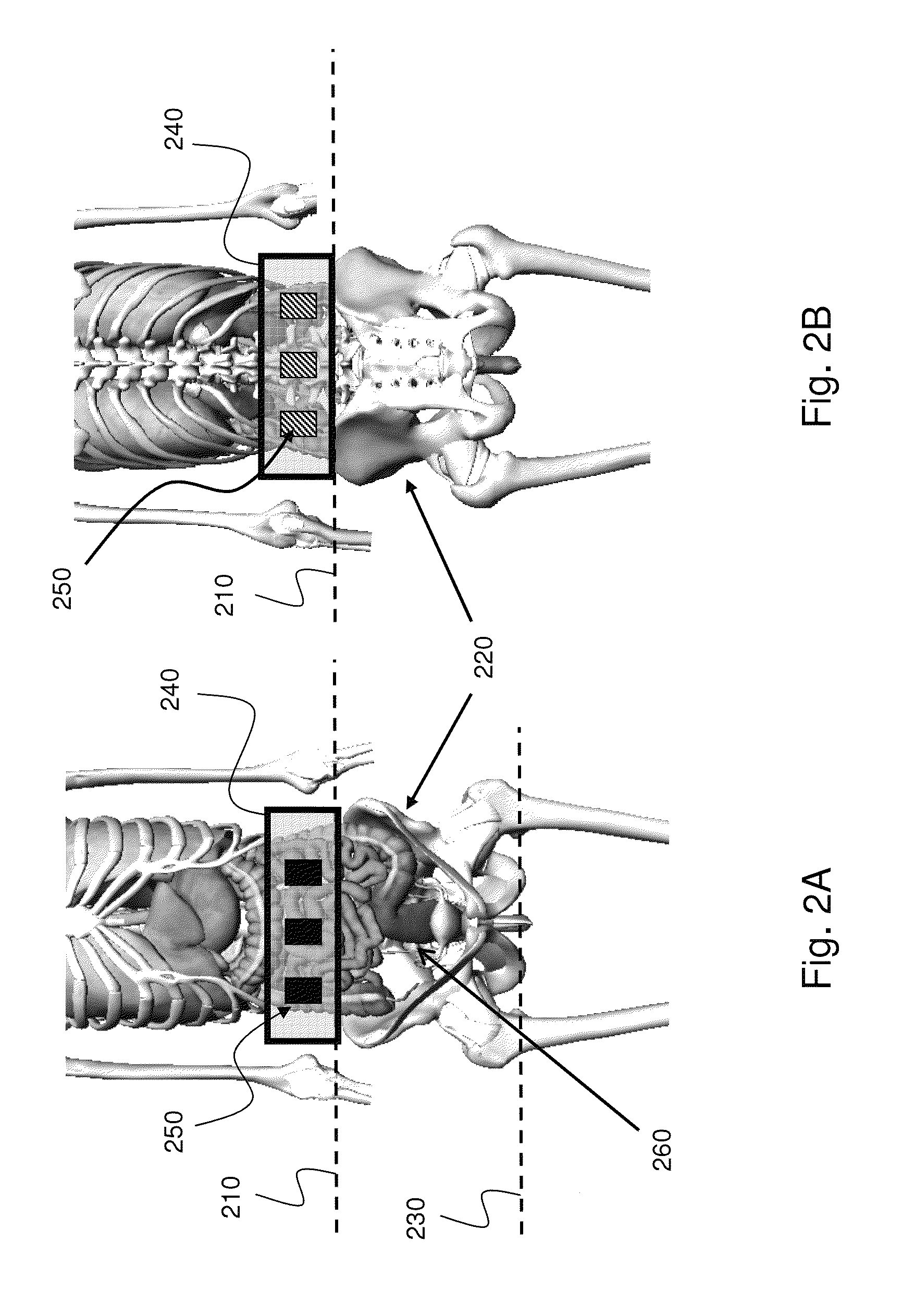Wearable antenna assembly for an in-vivo device
a technology of in-vivo devices and antenna assemblies, which is applied in the direction of antennas, diagnostics, applications, etc., can solve the problems of noisy communication, low transmission power of in-vivo devices, and gi tracts located within the body, so as to maximize signal reception, maximize signal reception, and maximize signal reception
- Summary
- Abstract
- Description
- Claims
- Application Information
AI Technical Summary
Benefits of technology
Problems solved by technology
Method used
Image
Examples
Embodiment Construction
[0032]The description that follows provides various details of exemplary embodiments. However, this description is not intended to limit the scope of the claims but instead to explain various principles of the invention and the manner of practicing it.
[0033]In an adult male human, the GI tract is 5 meters long in a live subject, or up to 9 meters without the effect of muscle tone, and consists of the upper GI tract and the lower GI tract. The GI tract may also be divided into foregut, midgut, and hindgut. The upper GI tract generally includes the esophagus, stomach, and duodenum. With respect to the GI system the exact demarcation between “upper” and “lower” can vary according to the used convention. The lower GI tract includes most of the small intestine and all of the large intestine.
[0034]When an in-vivo device traverses the GI system, it may move through the lower GI tract passively or controllably. The lower GI tract, which includes most of the small intestine and all of the la...
PUM
 Login to View More
Login to View More Abstract
Description
Claims
Application Information
 Login to View More
Login to View More - R&D
- Intellectual Property
- Life Sciences
- Materials
- Tech Scout
- Unparalleled Data Quality
- Higher Quality Content
- 60% Fewer Hallucinations
Browse by: Latest US Patents, China's latest patents, Technical Efficacy Thesaurus, Application Domain, Technology Topic, Popular Technical Reports.
© 2025 PatSnap. All rights reserved.Legal|Privacy policy|Modern Slavery Act Transparency Statement|Sitemap|About US| Contact US: help@patsnap.com



